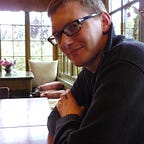Is an Insulator a Sphere or a Doughnut, and Other Misleading Questions
Last time I introduced the idea of the bulk-boundary correspondence. I.e. the idea that the bulk properties of a material can predict some robust behaviour on the edges. Now let’s look closer at which bulk properties are are needed.
Topological insulators are materials which in the bulk are insulating, so that they do not conduct electricity. On the surface there are however conducting electrons which, much like the states on the edges of the quantum Hall effect we have been looking at, are assured of being there regardless of the properties of the edge (well almost, reality is typically messier than such simple statements can encompass). There is in fact a direct correspondence between a specific number, which is an integer called a topological index, and the amount of states on the edges of the topological insulator. (‘State’ is a name we give to any particular possible configuration of an electron or other particle in a specific set-up. So here I really mean the number of possible electrons.) As the details of the edge are unimportant these electrons find it easy to move around the surface, leading to the good conduction.
So, is there a general way of understanding what kind of insulators will have these states on their surface? The short answer is yes. It turns out that it is topology and symmetry which tells us the answer, hence the name ‘topological insulator’. This picture has been slowly put together over the last 40 years, the last 10 of which have really seen an explosion of interest in these materials. The 2016 Nobel prize in physics was awarded exactly for contributions to these ideas.
I will not focus very much on the symmetry point here, just to say that the material needs to satisfy certain symmetry requirements. That these insulating materials can be classified by their topology was the really groundbreaking new idea. Topology is popularly explained as the study of what types of objects can be deformed into each other without cutting, breaking, or joining them. The classic example is of a coffee cup and a ring doughnut, one can be deformed into the other because they each have just one hole. However you can not make a sphere into a coffee cup without cutting a hole in it. These belong then to different topological classes.
How does this apply then to an insulator? After all what is an insulator? For our purposes it is a crystal structure of some number of different elements, which does not conduct electricity. In fact insulators come in a variety of types, but we are interested only in one type here. This has a nice simple explanation in terms of what they electrons in the crystal are doing. In a crystal some of the electrons belonging to each atom are bound tightly to the atom. Others are either spread out over the whole crystal, shared by all the atoms; or confined to an atom but not necessarily the one they ‘belong’ to. (These are covalent and ionic bonds.) The behaviour of these electrons moving around in the structure which is given by the (relatively static) atoms or ions is what we are interested in. We want to know if they can move, and we therefore have a conductor, or if they are stuck, and we have an insulator.
We can make a nice simple cartoon of how much energy different electrons can have:
Each green or purple circle is a possible electron state in the material. However we have only enough electrons available to fill up the purple circles. There is then a big energy gap until there are any more states. Now, if we want to do anything to this material, like make a current go through it, we need to move the electrons. But as we can see the only way to do this is by putting in more energy than the big gap, to move an electron into an empty gap. Hence our material is insulating. Note if we put more electrons in the material so the upper green circles are partially filled, then it becomes easy to move the electrons and we will have a metal. A real insulator looks much more complicated, but this contains the basic idea.
So, what on earth does this have to do with topology? Rather than deforming a shape, we deform the properties of this lower filled brand of electrons. Depending on how it behaves different types can have different indices, much like counting the holes in an object for the topology of 3D shapes. No band with a particular index can be changed into one with a different index, unless we join it to the another band, when it will cease to be insulating. That is the topology of a band insulator. That materials can be classified in this way has brought a whole brand new way of thinking to condensed matter physics. The example from last time possesses exactly this relation between its topology, and the robust conducting states on its edge and it is possible to prove this direct relation between the two.
Originally published at http://condensedmattersblog.wordpress.com on June 29, 2019.
